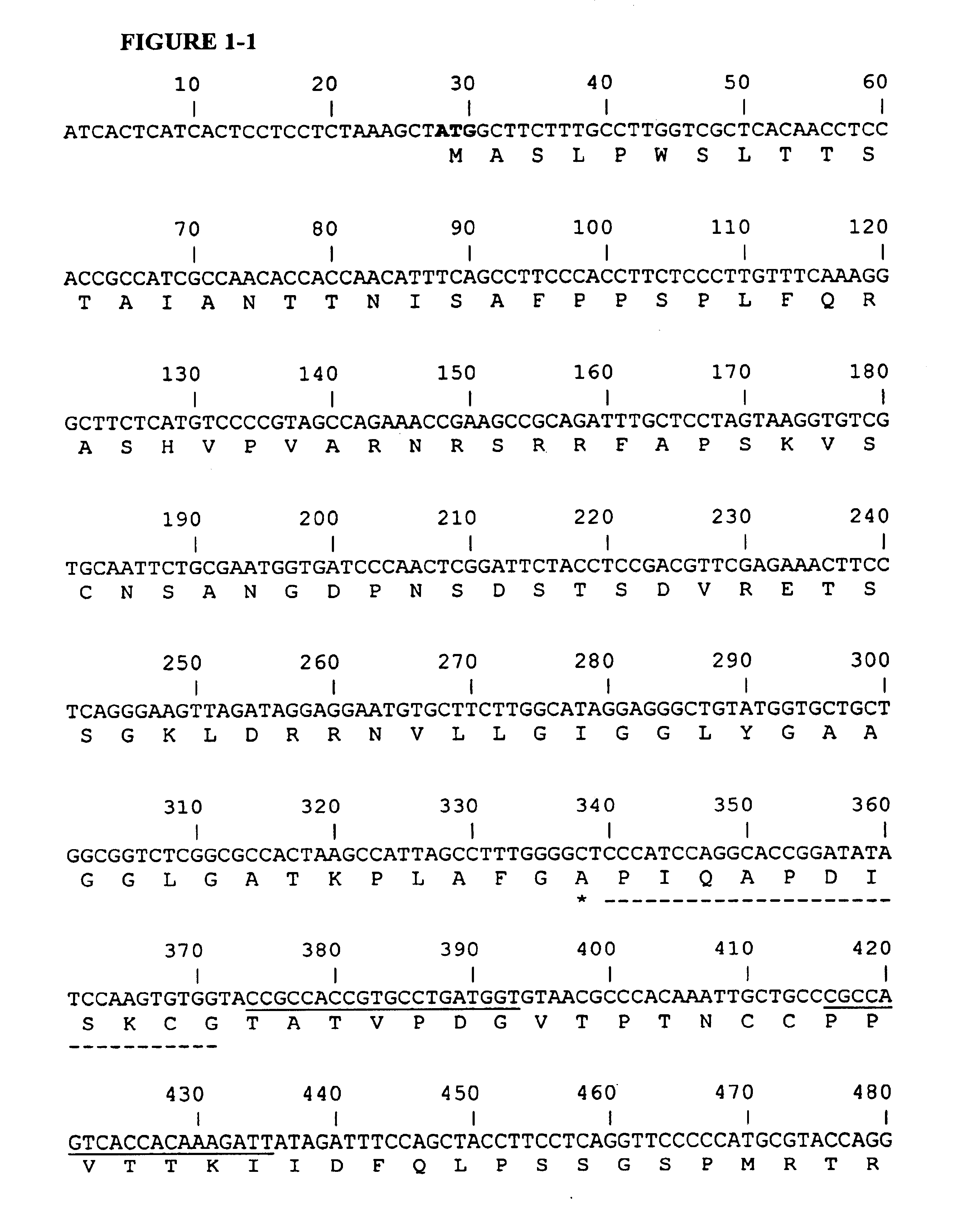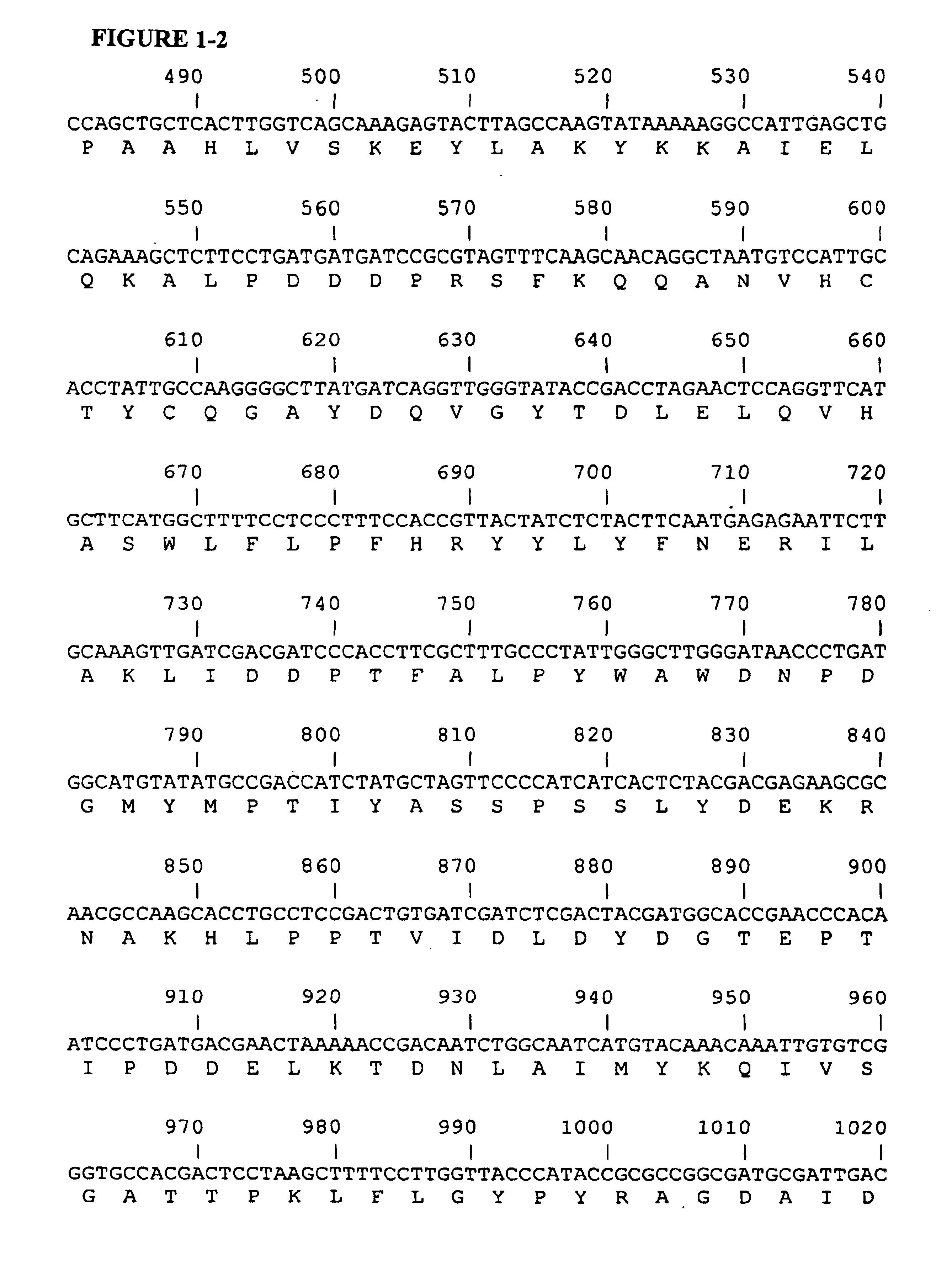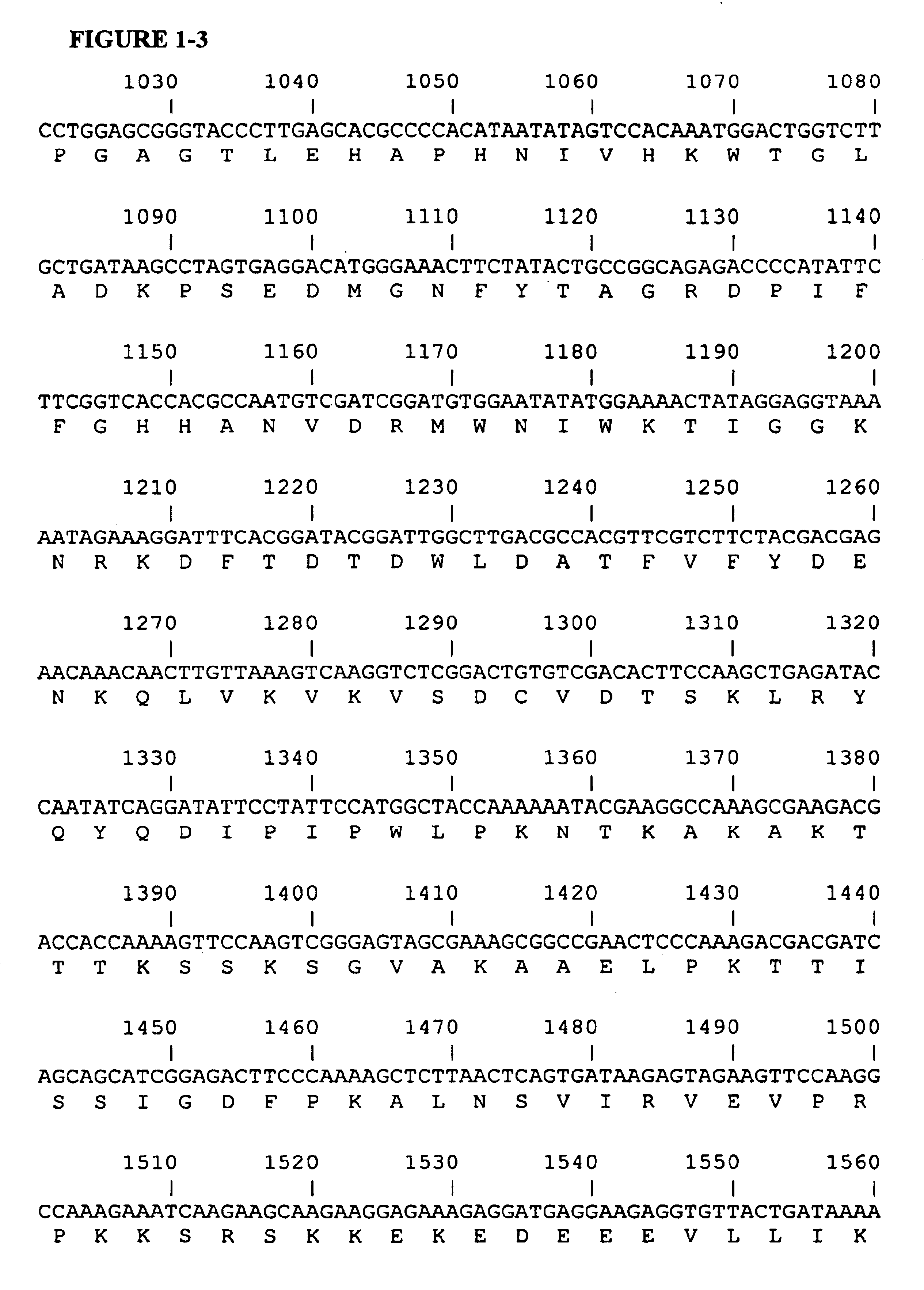Polyphenol oxidase genes from potato tuber, grape, apple and broad bean
a technology of polyphenol oxidase and potato tuber, which is applied in the fields of organic chemistry, biochemistry apparatus and processes, enzymes, etc., can solve the problems of spoilage of fruit and vegetables, undesirable browning, and limited use of these substances
- Summary
- Abstract
- Description
- Claims
- Application Information
AI Technical Summary
Benefits of technology
Problems solved by technology
Method used
Image
Examples
example 1
Purification of the PPO Protein
[0144]PPO was purified from grapevine berries. Initial experiments showed that this tissue contained high levels of the enzyme and that there appeared to be only one form of the enzyme as determined by electrophoresis in sodium dodecyl sulphate polyacrylamide (SDS-PAGE) gels. In the juice of mature grape berries most of the PPO activity was bound to the solids and could be separated from the juice by centrifugation and then solubilised with detergents. Enzyme activity during the purification was measured as oxygen uptake in the presence of the substrate 4-methyl catechol. All steps during the purification were carried out at 4° C.
[0145]Thirty kilograms of Sultana grapes were crushed with a small scale wine press and 100 ml of a solution of 100 mM ascorbate plus 10 mM dithiothreitol was added to each 900 ml of grape juice. The juice was centrifuged for 10 mins at 10,000×g and the supernatant discarded. The pellet fraction was resuspended in 25 mM sodium...
example 2
Amino Acid Sequencing
[0150]Approximately 1 mg of purified PPO protein was desalted on a 2.5×20 cm column of Sephadex G25 equilibrated with 20 mM ammonium bicarbonate, pH7.6, at a flow rate of 5 ml / min. The protein peak was collected and dried under nitrogen. The dried protein was carboxymethylated and the N-terminal amino acid sequence was determined with an automated amino acid sequenator by Edman degradation. The following sequence was obtained:[0151]APIQAPDISKCGTATVPDGVTP (SEQ ID NO:26)
example 3
[0152]Total RNA was isolated from sultana grape berries according to the method of Rezaian and Krake (1). A poly(A)+-enriched RNA fraction was obtained by passing the total RNA through one oligo-dT spun column (Pharmacia LKB Biotechnology).
[0153]First strand cDNA was synthesised in a reaction mixture containing 50 mM Tris-HCl pH 8.3, 25 mM KCl, 10 mM MgCl2, 4 mM DTT, 1 mM NaPPi, 1 mM dNTPs, 1 U ribonuclease inhibitor, 1.4 pg grape berry poly(A)+-enriched RNA, 21 U AMV reverse transcriptase (Promega Corp) and 0.5 μg Hybrid dT17-adapter primer[0154](5′-GACTCGAGTCGACATCGATTTTTTTTTTTTTTTTT(SEQ ID NO:15)
at 42° C. for 1 h. The reaction mixture was then diluted to 800 μl with TE (10 mM Tris-HCl pH 8.0, 1 mM EDTA) and stored at −20° C.
[0155]A 32-mer oligonucleotide primer[0156](5′-CCIATICAGGCICCIGATATIICIAAGTGTGG) (SEQ ID NO:17)
was designed to the N-terminal protein sequence (amino acids 2-12) of purified grape PPO. Inosine was utilised in positions in which more th...
PUM
| Property | Measurement | Unit |
|---|---|---|
| Mass | aaaaa | aaaaa |
| Mass | aaaaa | aaaaa |
| Mass | aaaaa | aaaaa |
Abstract
Description
Claims
Application Information
 Login to View More
Login to View More - R&D
- Intellectual Property
- Life Sciences
- Materials
- Tech Scout
- Unparalleled Data Quality
- Higher Quality Content
- 60% Fewer Hallucinations
Browse by: Latest US Patents, China's latest patents, Technical Efficacy Thesaurus, Application Domain, Technology Topic, Popular Technical Reports.
© 2025 PatSnap. All rights reserved.Legal|Privacy policy|Modern Slavery Act Transparency Statement|Sitemap|About US| Contact US: help@patsnap.com



